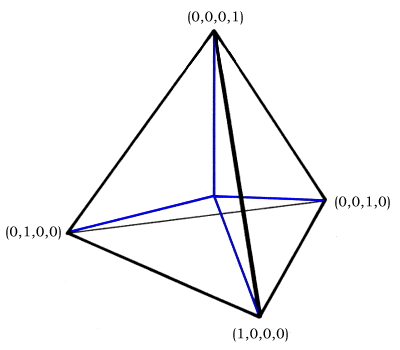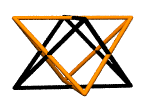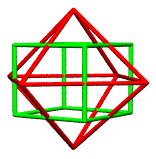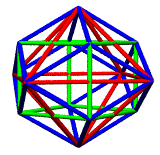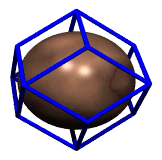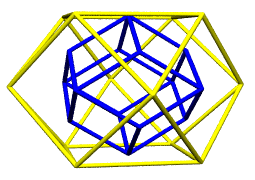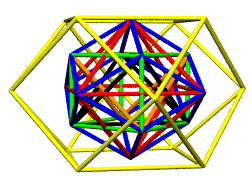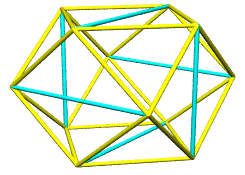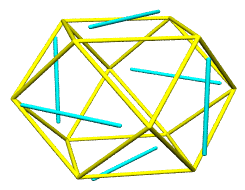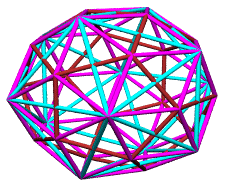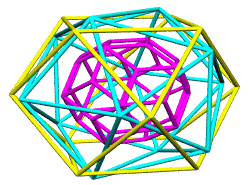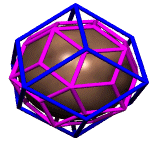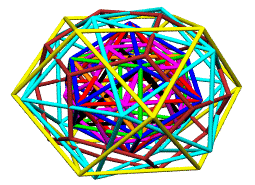|
Because the 3 original pairs are oriented in the mutually
perpendicular xyz directions, the pushing apart and the shortening
involve moving existing points in the xyz directions. Expressed as
quadrays, these xyz directions are:
(0,0,1,1) (0,1,0,1) (0,0,1,1)
(1,0,0,1) (1,0,1,0) (1,1,0,0)
So our pushing apart and shortening operations involves adding
vectors in the above six directions, after first scaling
them by precise amounts. Scaling involves first dividing a vector
by its native distance, such as root(2) in the case of the above 6,
which effectively makes it unit length. Given our turtle
objects internally track a vector's distance, scaling to unity is
easy to implement. Then whatever additional scaling factors are
applied.
The scaled and added vectors will move existing vertices of the
cuboctahedron out and closer together, to give 3 golden rectangles,
with external edges of 1, and cross beams -- through the interior
of the cuboctahedron -- of length 2 x phi (where phi = [1 +
root(5)]/2)
|
|
The initial cuboctahedron vertices are at the locations:
(0,1,1,2) (0,1,2,1) (0,2,1,1)
(1,0,1,2) (1,0,2,1) (1,1,0,2)
(1,1,2,0) (1,2,0,1) (1,2,1,0)
(2,0,1,1) (2,1,0,1) (2,1,1,0)
These quadray vector additions generate 12 new points for the
allpoints table, and 30 new entries in shapes,
patterned after those used for V1 + VS (cuboctahedron plus 6 square
diagonals). Given the new data for I1, the existing makeshape( )
method provides the expected icosahedron of volume ~18.51.
We develop the pentagonal dodecahedron by adding the 3 quadrays
associated with each of the icosahedron's 20 triangles. Each
3-vector sum provides a spoke aimed straight through an icosahedron
face center. A scale factor of 1/distance shortens the spokes to
unit length, and a second scale factor extends them to provide a
dodecahedron with mid-edges perpendicalar to and intersecting the
icosahedron's. This second scale factor was computed using Figure
986.405 and Figure 986.411A in Synergetics (2nd volume) and
is:

This pentagonal dodecahedron, the icosahedron's dual, supplies
the remaining vertices of the rhombic triacontahedron, another
five-fold symmetric member of the synergetics concentric
hierarchy.
|

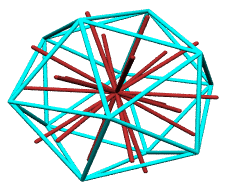
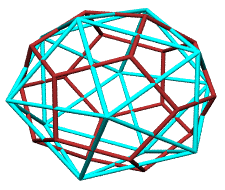 |
